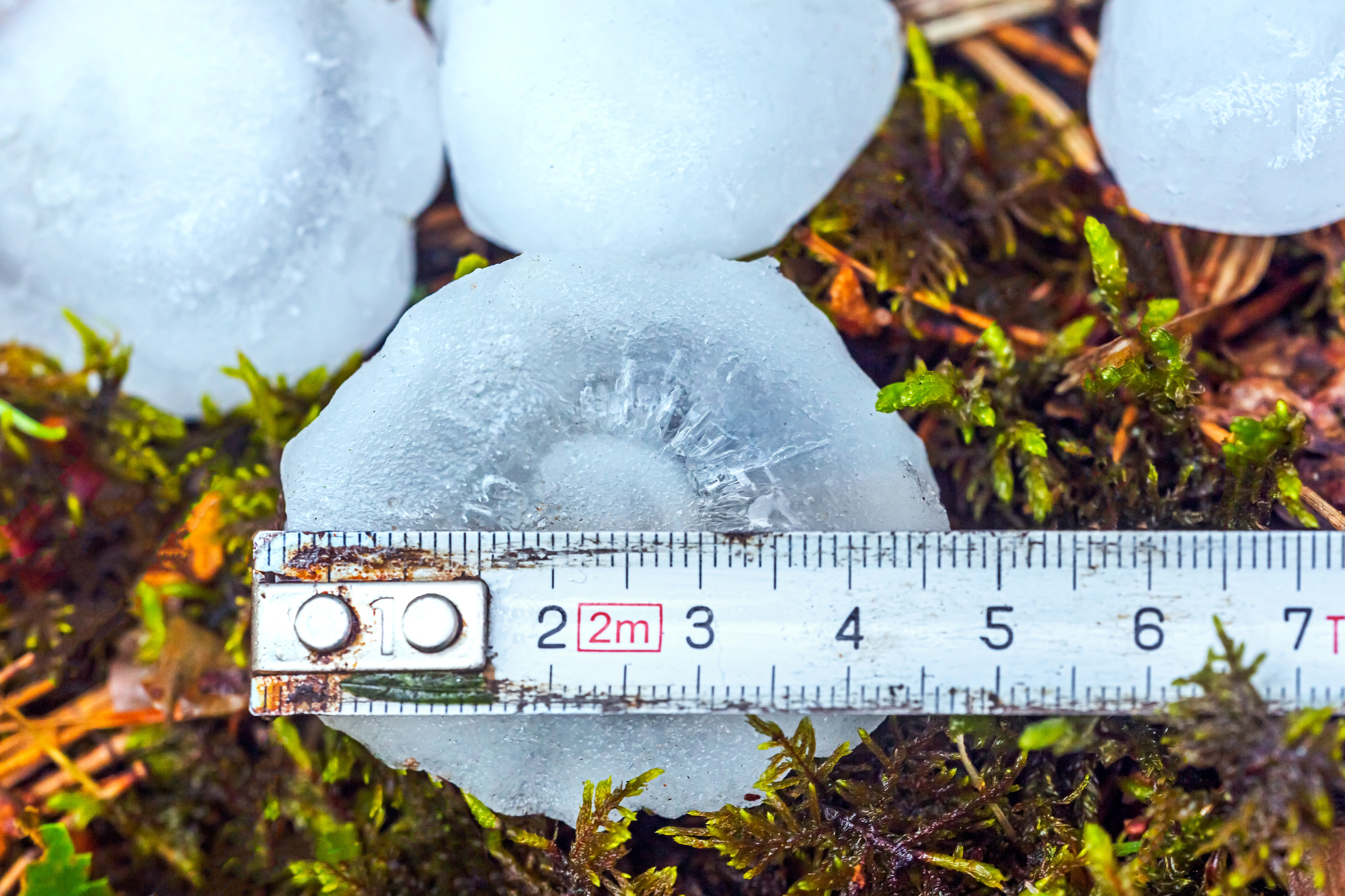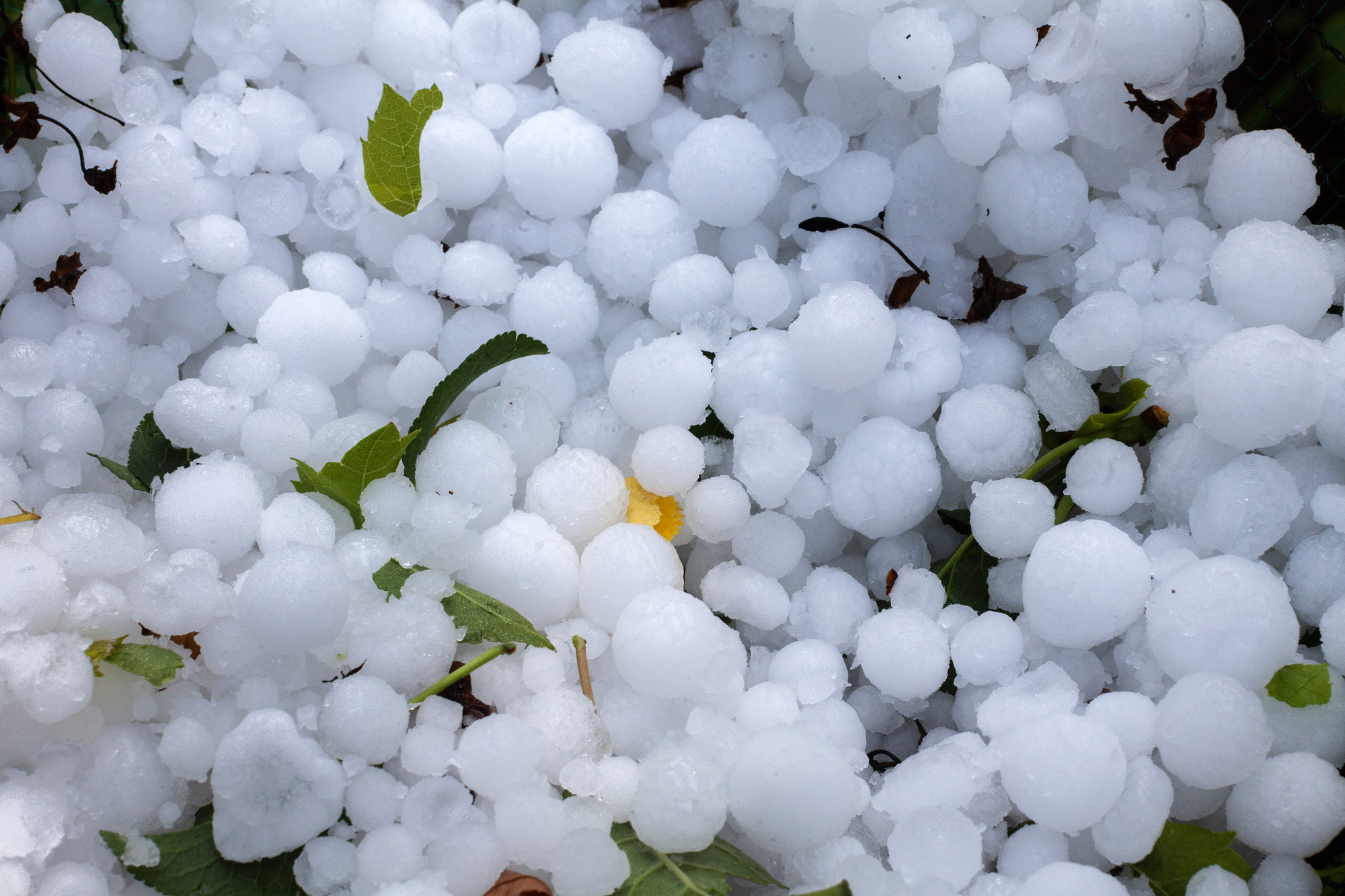December 31, 2025
Snow and Ice Management: Protecting Commercial Roofs and Building Exteriors from Winter Strain
Winter conditions like snow and ice create a very different operating environment for
Hailstorms continue to wreak havoc on properties, leaving behind shattered windows, battered roofs, and millions—sometimes billions—of dollars in damages. These storms strike with little warning, turning routine weather events into full-scale disasters.
Business operations grind to a halt, tenants face displacement, and restoration costs quickly escalate. For commercial property owners and managers, the aftermath often means navigating complex insurance claims, coordinating urgent repairs, and bracing for the financial impact.
The past two decades have seen some of the most destructive hailstorms in U.S. history. Massive hail swaths have pummeled cities from Phoenix to Denver, with single storms causing billions in insured losses. The scale of destruction is growing, making preparedness no longer optional but essential.
By examining major hailstorms of the past and the evolving approaches to mitigation and emergency commercial restoration, property owners can take action before the next storm hits. The goal is clear: reduce risk, minimize damage, and ensure business continuity.

Hailstorms rank among the most costly and destructive weather events, yet their full impact is often underestimated. Unlike other natural disasters, hail damage may not always be immediately visible, allowing structural vulnerabilities to worsen over time.
Even a brief storm can leave behind millions of dollars in losses, from shattered windows to compromised roofing systems.
Hail develops within strong thunderstorms where intense updrafts lift raindrops into the colder upper atmosphere. Droplets freeze and accumulate layers of ice as they are repeatedly carried through supercooled cloud regions. Once they become too heavy for the updrafts to support, they fall to the ground as hailstones.
The size of hail varies, ranging from pea-sized to baseball-sized or larger, with larger stones having the potential to cause catastrophic damage.
The impact energy of hail increases exponentially with its size. For instance, a 2-inch hailstone can strike a surface with nearly four times the force of a 1-inch stone. This energy is enough to puncture roofing materials, crack windows, and dent metal surfaces, making hailstorms one of the most destructive severe weather events for commercial buildings.
Hail can compromise various building components, leading to both immediate and long-term problems.
Hailstorms generate billions in insured losses every year, with repair costs extending far beyond surface damage.
Hailstorms have become more frequent and severe, with climate change contributing to shifts in atmospheric conditions that favor larger hail and longer-lasting storms. Rising global temperatures allow storms to hold more moisture and produce stronger updrafts, leading to bigger, more damaging hailstones.
As urban areas expand, the financial impact of these storms continues to grow, with each major event causing billions in insured losses.
Examining historic hailstorms provides valuable insight into their destructive potential, the vulnerabilities they expose, and the increasing need for stronger building materials, improved forecasting, and strategic restoration efforts to mitigate future risks.
The Tristate Hailstorm of April 10, 2001, remains one of the most significant hail events recorded in the United States.
The storm system originated in Kansas, traversing a 585-kilometer swath before dissipating in Illinois. A long-lasting supercell formed at the southern edge of a larger storm system moving east, producing hail for an extended period.
Hailstones ranging from 2.5 to 7.5 cm in diameter were deposited along a path measuring between 10 and 25 km in width. The continuous nature of the hail swath contributed to extensive property damage, culminating in insured losses of approximately $1.5 billion.
The broader meteorological conditions facilitated the occurrence of additional damaging hailstorms across multiple states, raising the total economic impact of the event to $1.9 billion.
A severe weather outbreak affecting central Arizona on October 5, 2010, resulted in widespread property damage across the Phoenix metropolitan area. The development of supercell thunderstorms within a moisture-laden atmospheric environment facilitated the formation of exceptionally large hailstones, reaching diameters of up to 7.6 cm.
The cities of Phoenix, Glendale, Peoria, Mesa, and Scottsdale experienced substantial structural and vehicular damage, with total losses amounting to $2.81 billion. The occurrence of a tornado outbreak the following day exacerbated the meteorological crisis, marking the largest single-day tornado event in Arizona’s recorded history.
On May 8, 2017, a supercell thunderstorm originating in the foothills west of Denver advanced into the metropolitan area, producing hailstones of considerable size. The presence of baseball-sized hail caused widespread destruction, leading to an insured loss estimate of $2.3 billion.
The timing of the storm, coinciding with the evening commute, resulted in extensive vehicular damage, as well as structural impairments to commercial properties and residential areas.
Colorado Mills Mall sustained severe roof and façade damage, necessitating an extended closure period.
A severe hailstorm impacting the Denver metropolitan area in May 2024 resulted in an estimated $2 billion in damages across Colorado. The storm, occurring on May 30, produced intense hail activity, leading to substantial claims submissions within 24 hours.
The event ranked as the second-costliest hailstorm in Colorado history, surpassed only by the 2017 Denver hailstorm when adjusted for inflation.
The increasing financial burden associated with hailstorm-related losses emphasized the growing urgency for long-term resilience strategies in commercial property construction and restoration practices.

Hailstorms present an ongoing threat to commercial properties, necessitating proactive strategies in construction, emergency planning, insurance management, and post-storm restoration.
Lessons drawn from past events highlight key measures that can reduce damage, streamline recovery, and improve long-term resilience.
Investments in impact-resistant materials and structural reinforcements play a crucial role in minimizing hail-related damage.
Roofing systems should be a primary focus, with the adoption of reinforced membranes, hail-resistant shingles, and high-strength glazing materials becoming standard in commercial construction. Advances in polymer-based roofing solutions and elastomeric coatings have further enhanced protection by absorbing impact forces and reducing penetration risks.
Exterior reinforcements have also proven effective in mitigating structural vulnerabilities. The installation of storm shutters, reinforced facades, and protective barriers decreases the likelihood of severe damage to windows and building exteriors.
Additionally, design standards have evolved to incorporate hail resistance, influencing architectural decisions for new developments and retrofit projects alike.
Advancements in meteorological monitoring have significantly improved the ability to predict and respond to hailstorms. AI-driven forecasting models, Doppler radar technology, and satellite-based tracking increase the accuracy of storm predictions, allowing commercial property managers to implement protective measures before impact.
Beyond monitoring, emergency planning remains a critical component of risk management. Businesses have to refine response protocols by establishing workforce evacuation plans, reinforcing vulnerable structures in advance, and securing outdoor assets.
Business continuity planning has also gained emphasis, ensuring that operational disruptions are minimized through contingency arrangements, such as temporary workspaces and backup infrastructure.
The financial impact of hail damage has prompted businesses to reassess their insurance strategies.
Comprehensive hail damage coverage has become an essential component of commercial property policies, with risk assessments conducted regularly to adjust coverage based on exposure levels.
Many insurers encourage property owners to maintain detailed documentation, including photographic records and structural assessments, to streamline claims processing.
Finally, rapid restoration efforts are essential to preventing further structural deterioration after a hailstorm. Specialized restoration teams trained in hail damage assessment and repair have to be deployed to commercial sites as soon as possible to expedite recovery processes.
Temporary protective measures, such as emergency roofing installations, reinforced tarping, and water intrusion mitigation, are widely implemented to prevent secondary damage.
Moreover, the use of prefabricated roofing panels and polymeric sealants accelerate restoration timelines, allowing businesses to resume operations more quickly.

For commercial property owners facing hail-related damage, BlueTeam provides expert restoration, construction, and roofing services designed to strengthen buildings against future storms.
From impact-resistant roofing systems to rapid post-storm repairs, BlueTeam ensures commercial properties recover quickly and are better equipped to handle severe weather. Contact BlueTeam today to reinforce your commercial property before the next hailstorm strikes.